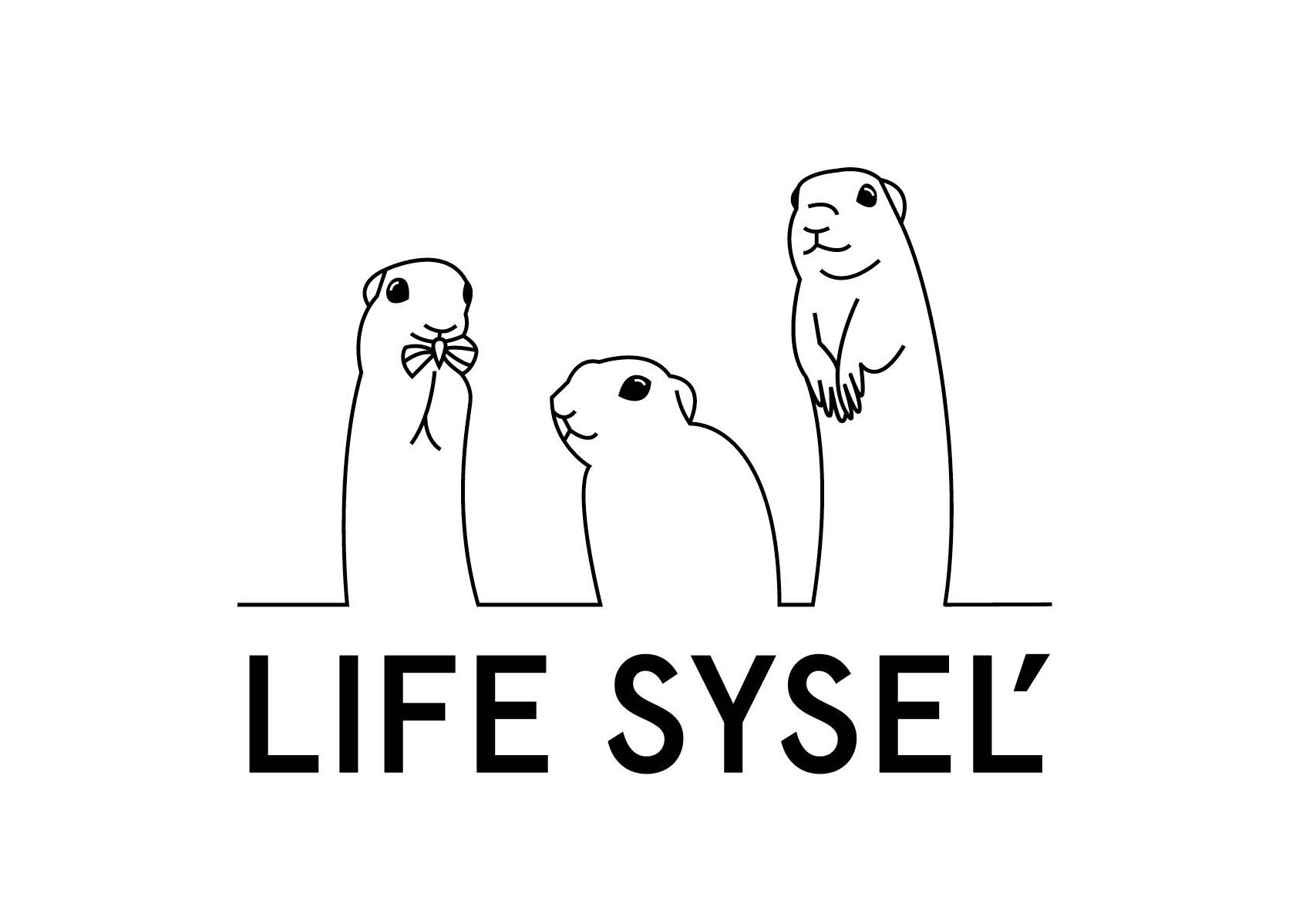Conservation of European Ground Squirrel
Project focuses on protection and enhancement of European Ground Squirrel populations in the nortwestern borders of it´s range: in Slovakia, Czech republic and in Poland.
The aim of this project is to support existing populations, restore suitable habitats and reintroduce the species to former localities.
- Novinky & Activities
- Main information
- Target species
- Project area
- Activities and results
- Achieved goals
- Media outputs
- Photogallery
- Personnel
- How to help Ground Squirrel

Ground squirrel trapping at the Bratislava Airport is underway.
As we do every year, in the spring and summer, our ground squirrel team captures ground squirrels at sites with stable populations and transports them to genetically poor or newly established sites. This morning, 65 ground squirrels were captured and are currently being transported to sites in the White Carpathians and Podunajsko region.

Ground squirrels are social animals. More numerous colonies are stronger.
The European ground squirrels are animals that live in large groups. In ideal conditions, they will grow to several thousand members and gradually colonise the surrounding landscape, provided it is suitable and there is low vegetation - grassland, or mown lawns or meadows.

Ground squirrel meadows are blooming beautifully right now
Throughout spring, meadows with the presence of ground squirrels bloom in abundance. Ground squirrel habitats are usually pastures, so this suitable combination of inter-species cooperation bears its fruit.

What does the ground squirrel team do while ground squirrels sleep?
The ground squirrel team is working hard on clearing the beautiful, grike ground squirrel field in Tisovec, abundant with rocks and biodiversity.

The ground squirrels are sleeping. What does our team do in the meantime?
Our team is definitely not sitting idle, they're running over the sleeping ground squirrels' heads and working on clearing future pastures. For example, on the Muránska plain. You surely know the ground squirrel site Biele vody, which is very popular for the purpose of observing and "feeding" ground squirrels, sort of like a ground squirrel safari.

It’s not only farmers helping the ground squirrels, but also vice versa.
For example in the Tisovský kras area: A local farm has also recently had its grike fields excluded from subsidies. This story is familiar to many farmers and can shuffle the financial stability of many of them.

Mossy Earth made a beautiful video about the ground squirrels’ translocation.
Mossy Earth, an organization that partially funds our rescue trapping of the European ground squirrel, made a beautiful video about this adrenaline-pumping activity.

Response to the false attacks on BROZ.
We are writing this post in response to the attacks that we've been facing in recent days, directly or indirectly, on ourselves and our conservation projects, which we have been working on systematically for a long time.
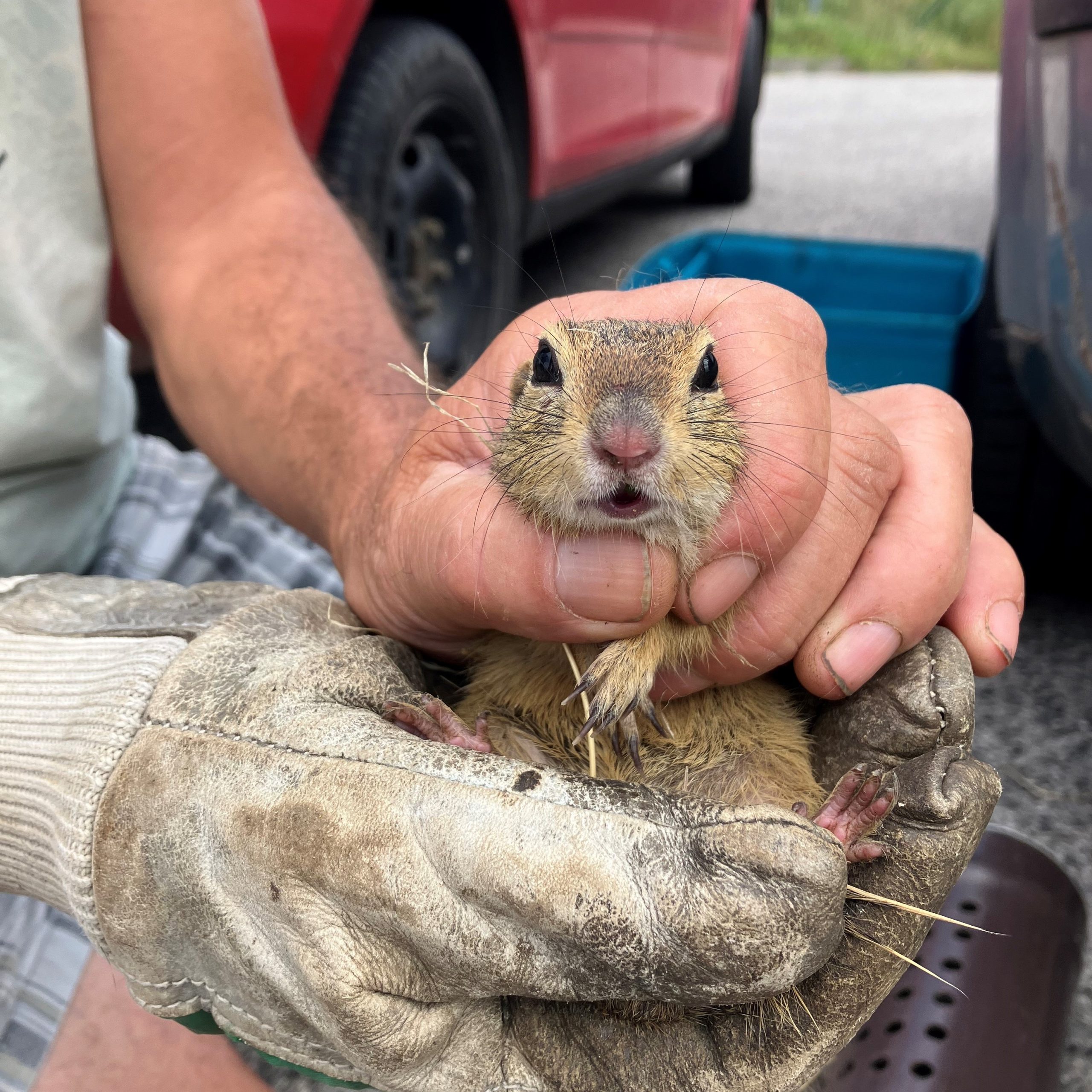
We are finishing the rescue trapping of ground squirrels
Rescue trapping of ground squirrels near the Bratislava airport will soon be completed. You are looking at one of the last squirrels from this capture. We recently wrote about our colleagues from our ground squirrel conservation project who have been trapping ground squirrels there to save them because there is going to be construction on this site.

Near the airport, we are dealing with the largest ground squirrel rescue capture
It is not any news that the largest population of ground squirrels in Slovakia lives at the Bratislava airport. Well, these squirrels naturally also run into the open countryside from there, and the mowed grass meadows between the technical buildings provide them good living space.

Together with municipality we are restoring grazing in Spišské Podhradie
Sheep grazing has a long-term tradition in Spiš, and for its restoration in the meadows of Spišské Podhradie, several entities sterted to cooperate - the conservation association BROZ, the Administration of the Slovak Raj National Park, the city of Spišské Podhradie, and the Bishopric of Spišské with its seat in Spišské Podhradie at the Spišská Kapitula.

The sheep have arrived to Spiš, so that we will soon restore grazing for ground squirrel there
On Monday, sheep of our original breed - valaška - traveled to Spiš to get to know the new barn and meet the shepherd. As early as next week, we are going to release them at a beautiful location, on a meadow near Spišské Podhradie with a view of UNESCO location Spišský hrad.

The ground squirrels woke up a month earlier due to the warming
This is also the reality of a cliamte change. Ground squirrels wake up every year in the middle to the end of March, which is about a month from now. This year, several localities report us that they have woken up and have already moved through their burrows, which means they have been awake for about a week.
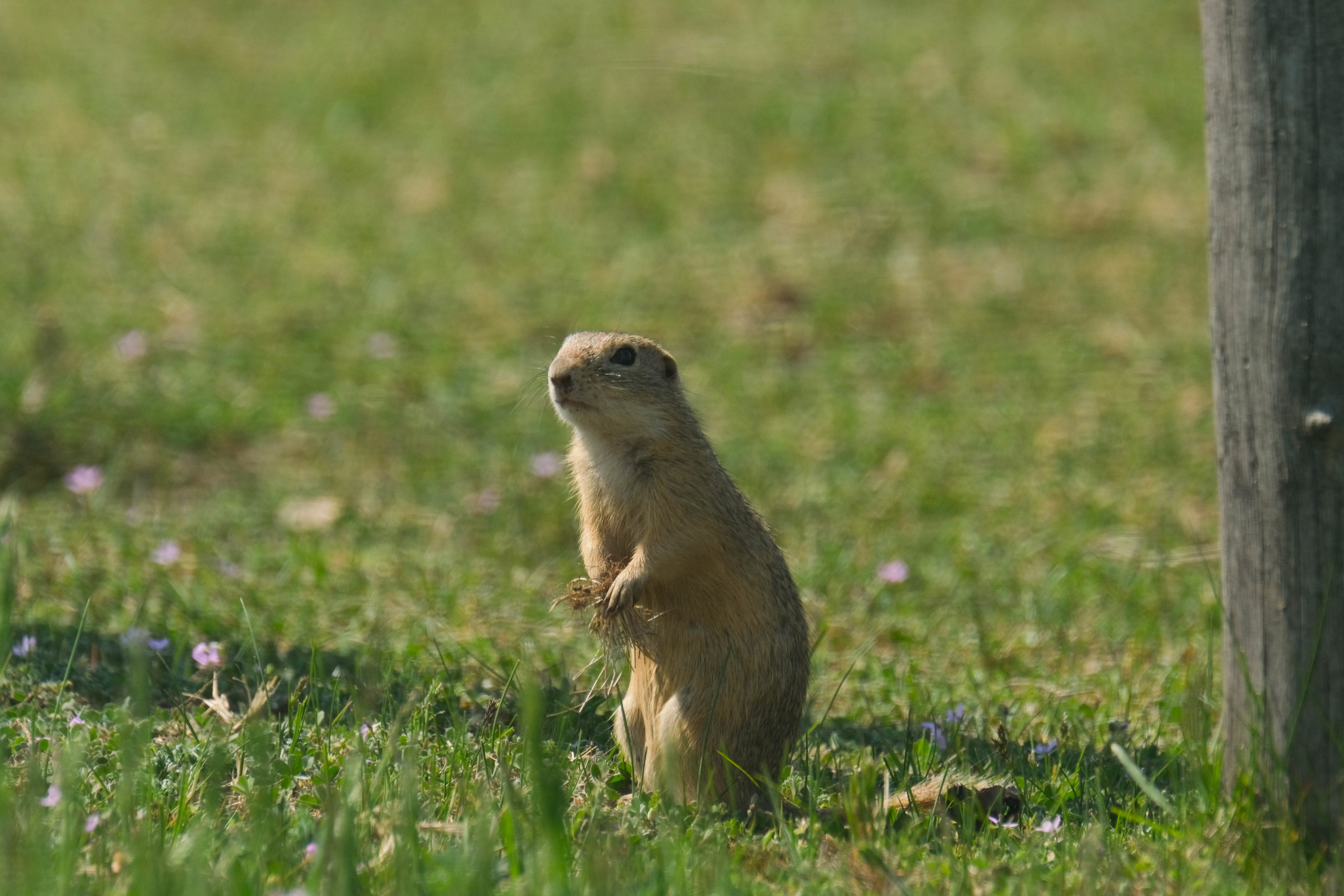
The number of ground squirrels in Slovakia rose from 28,000 to 36,000
In 2019, the ground squirrel was listed as critically endangered on the IUCN Red List, and population curves throughout Europe show a continuing downward trend. Despite these trends, the number of Slovak ground squirrels continues to increase after decades. Thanks to nothing else than the LIFE Sysel project.
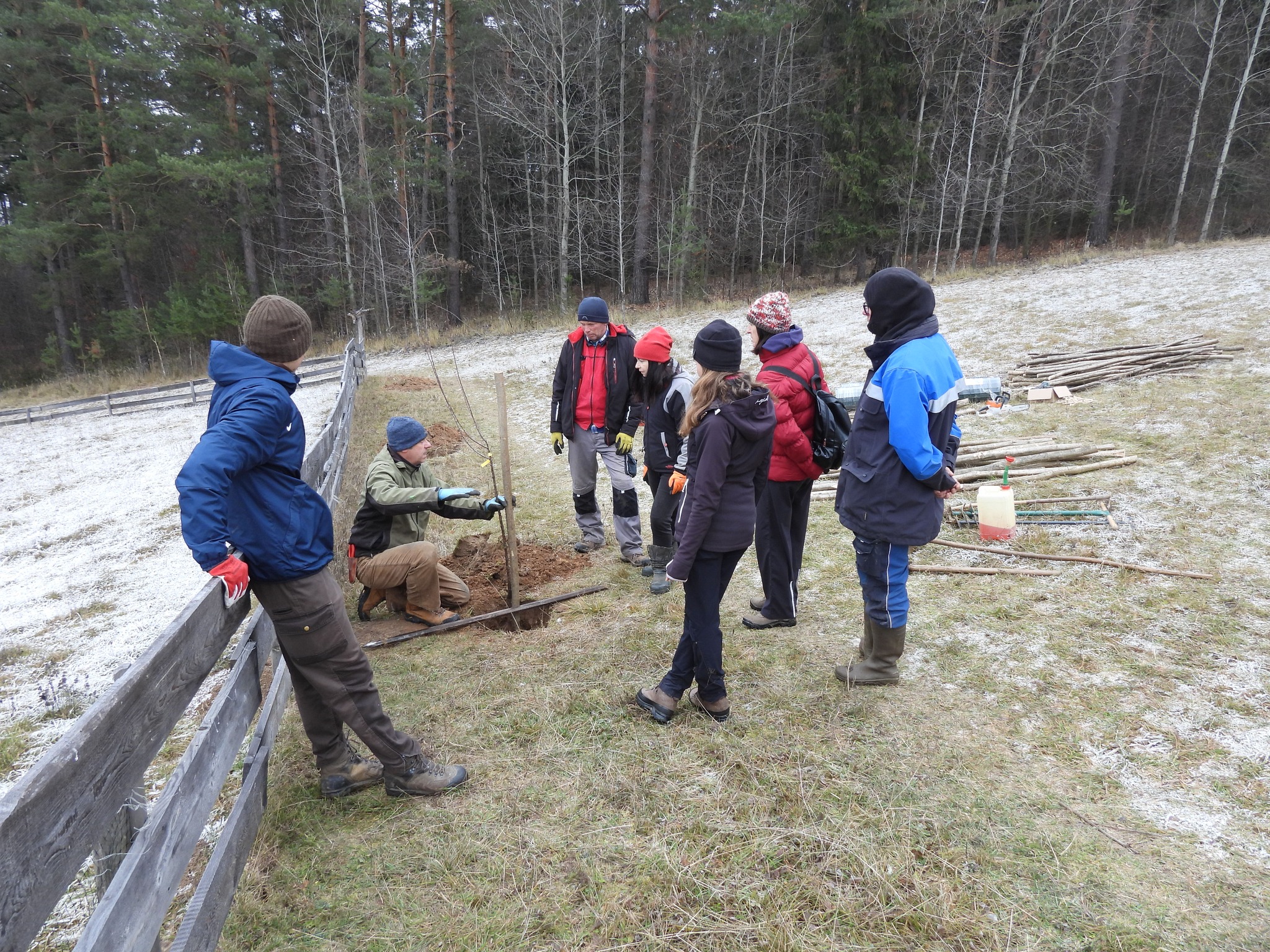
We are planting trees for ground squirrel
Today we planted fruit trees at the Ďurkovec sysľovisko near Tomášovský výhľad in Slovak paradise. It was a great and useful event and we thank everyone who participated. All of us are looking forward to the harvest, both for us and for the groundhogs.

We created a sock collection with Dedoles company
On recent wanderings through the floodplain forest, the restoration of which was supported by the Dedoles company, we addressed other possibilities of our cooperation. How about creating a joint collection of socks? And draw attention to disappearing biodiversity? And so the Endangered Species collection was created, thanks to which species more or less conspicuously disappearing from our country got on the socks and information about them on the Dedoles website.
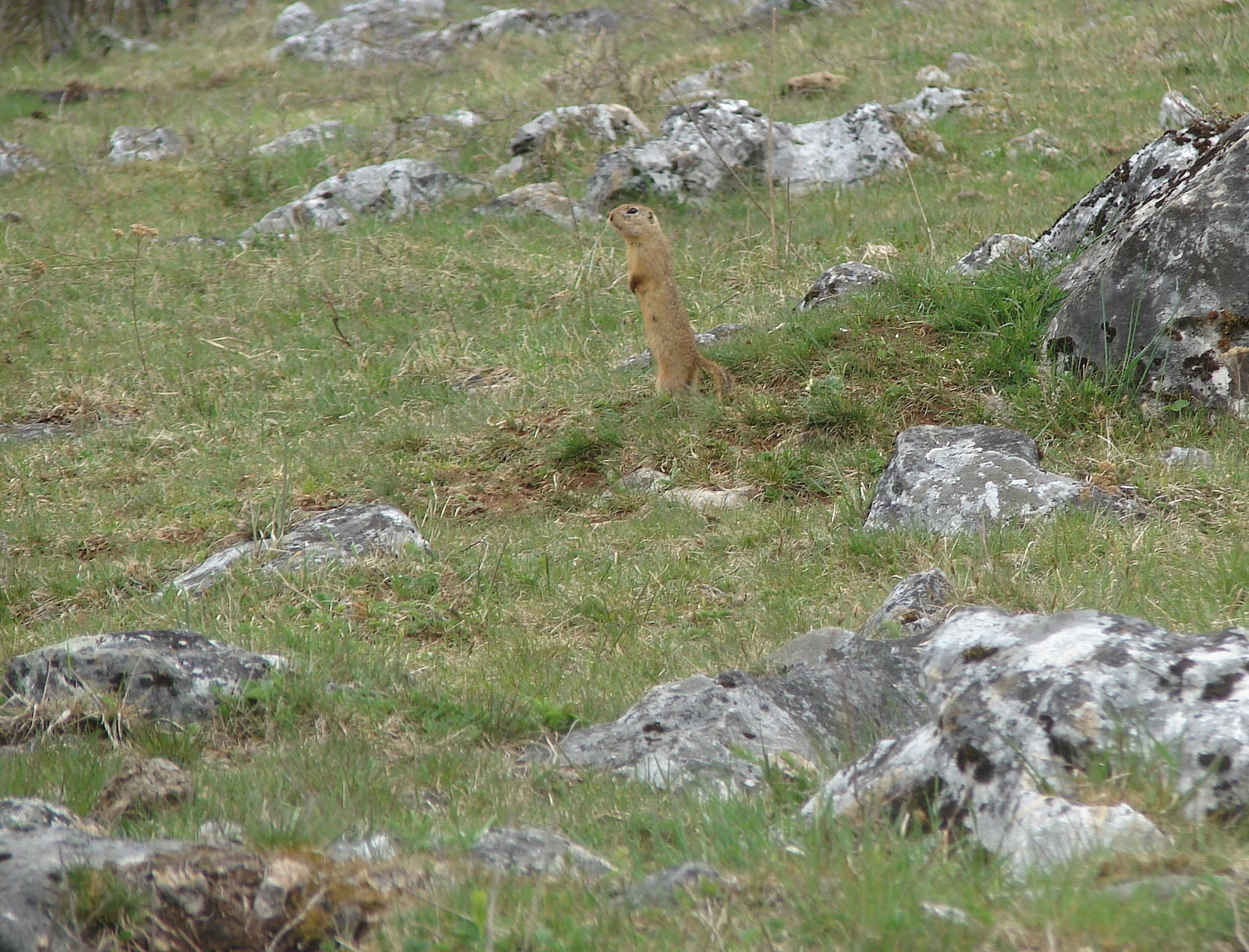
Ground squirrel locality in Tisovec is brimming with life
There is always something going on at the ground squirrel locality in the Tisovský Kras. We just recently finished cleaning before the pasture will start and we are still raking the cleared piles of bushes. We strengthened the squirrel colony with individuals from Murán. The ones you see there with some kind of pattern on their back are the new settlers. We shortened their hair with scissors, the lower part of which is black. In this way, they will have patterns by which we can recognize them and follow their fate. And the most important thing – whether they mate with local residents.
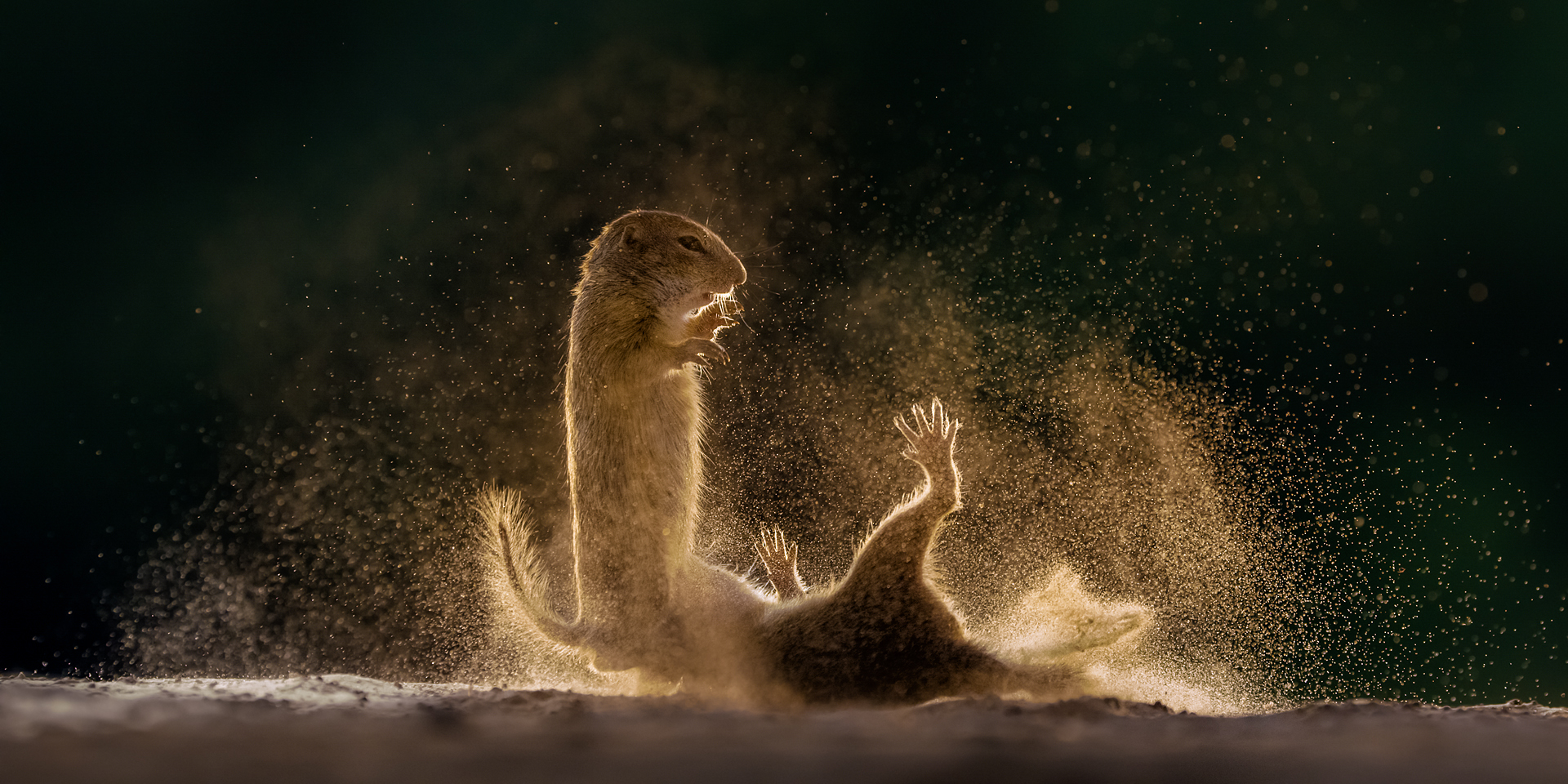
Photos of gorund squirrels from great hungarian photographer
We invite you to see the photos of ground squirrels by the famous Hungarian photographer Maté Bence.
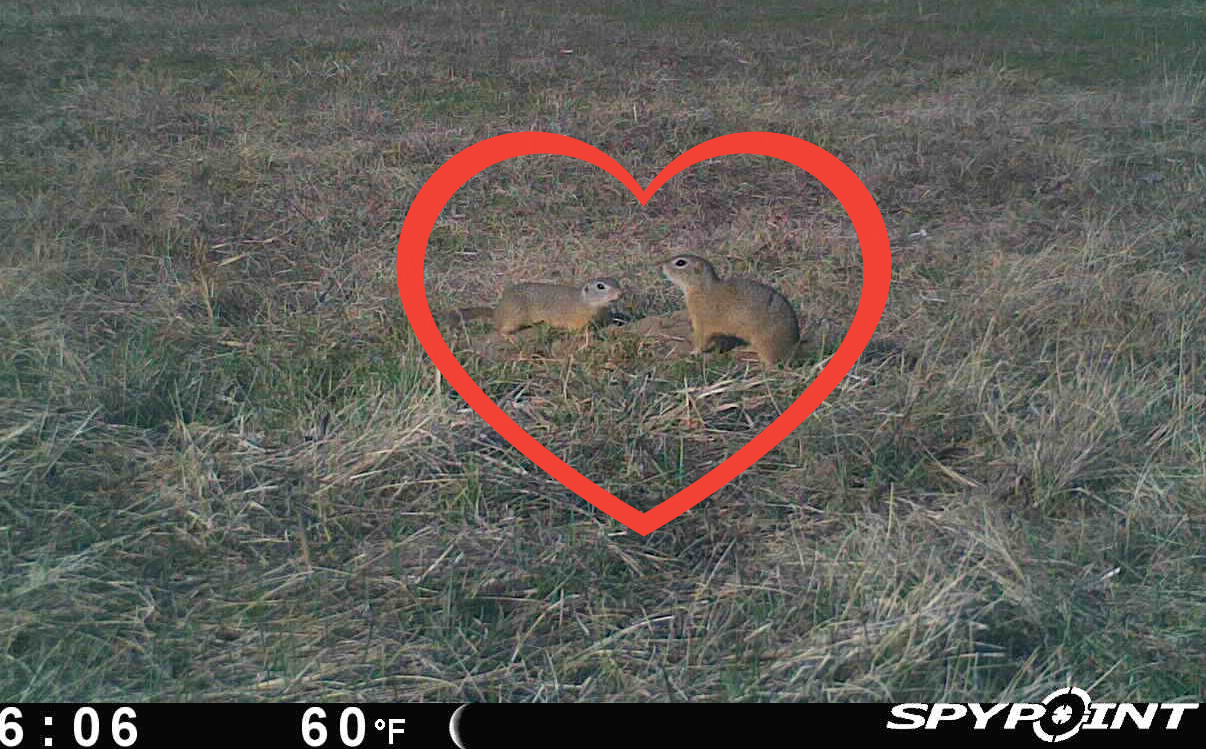
Ground squirrel dating programme is succesful
The ground squirrels, which were part of the first part of the captures on March 18-25, 2022, are already in their new homes and are obviously doing well.
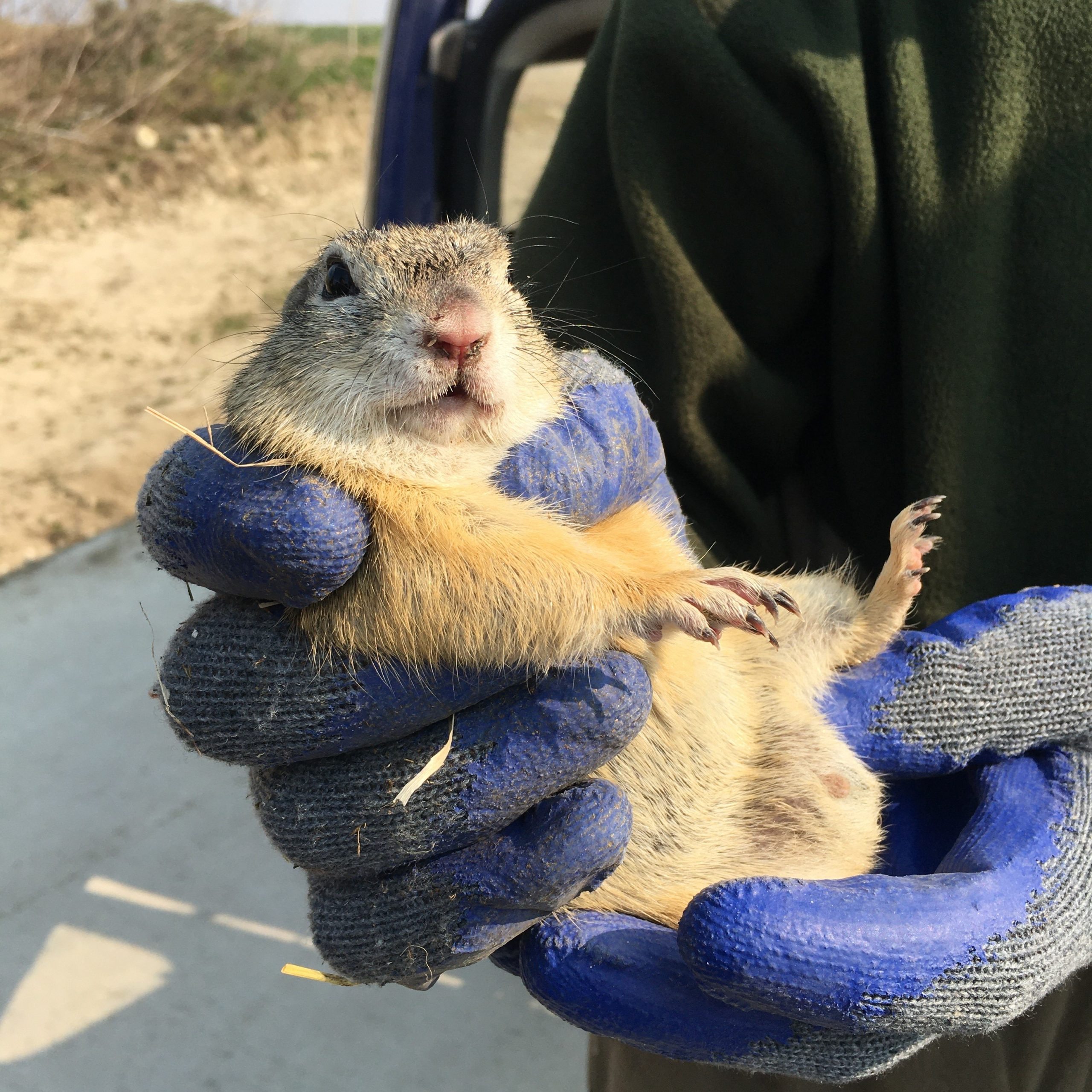
We started with spring capture of ground squirrels
Over the weekend we started with capture of ground squirrels at the Bratislava airport, these days we are continuing in the Slovak Kras and the Muránska planina will follow.
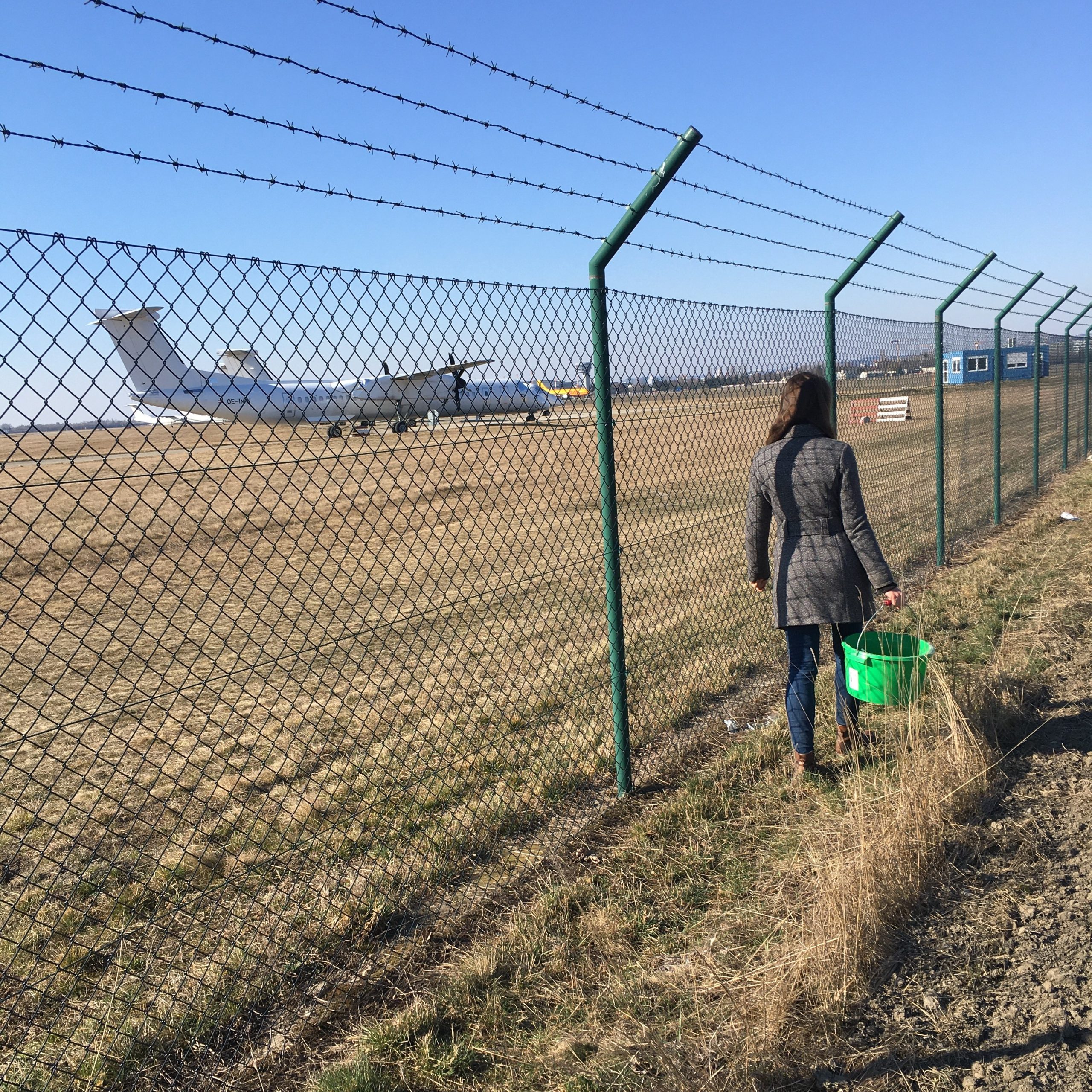
We are feeding ground squirrels, we are preparing catches
In recent days, our volunteers have been going to the Bratislava airport to feed the ground squirrels. Every roughly 20-30 meters they throw a little sunflower to get them used to going to these places. We are planning to catch ground squirrels there and transport them to other locations in order to strengthen several populations in southern and western Slovakia.
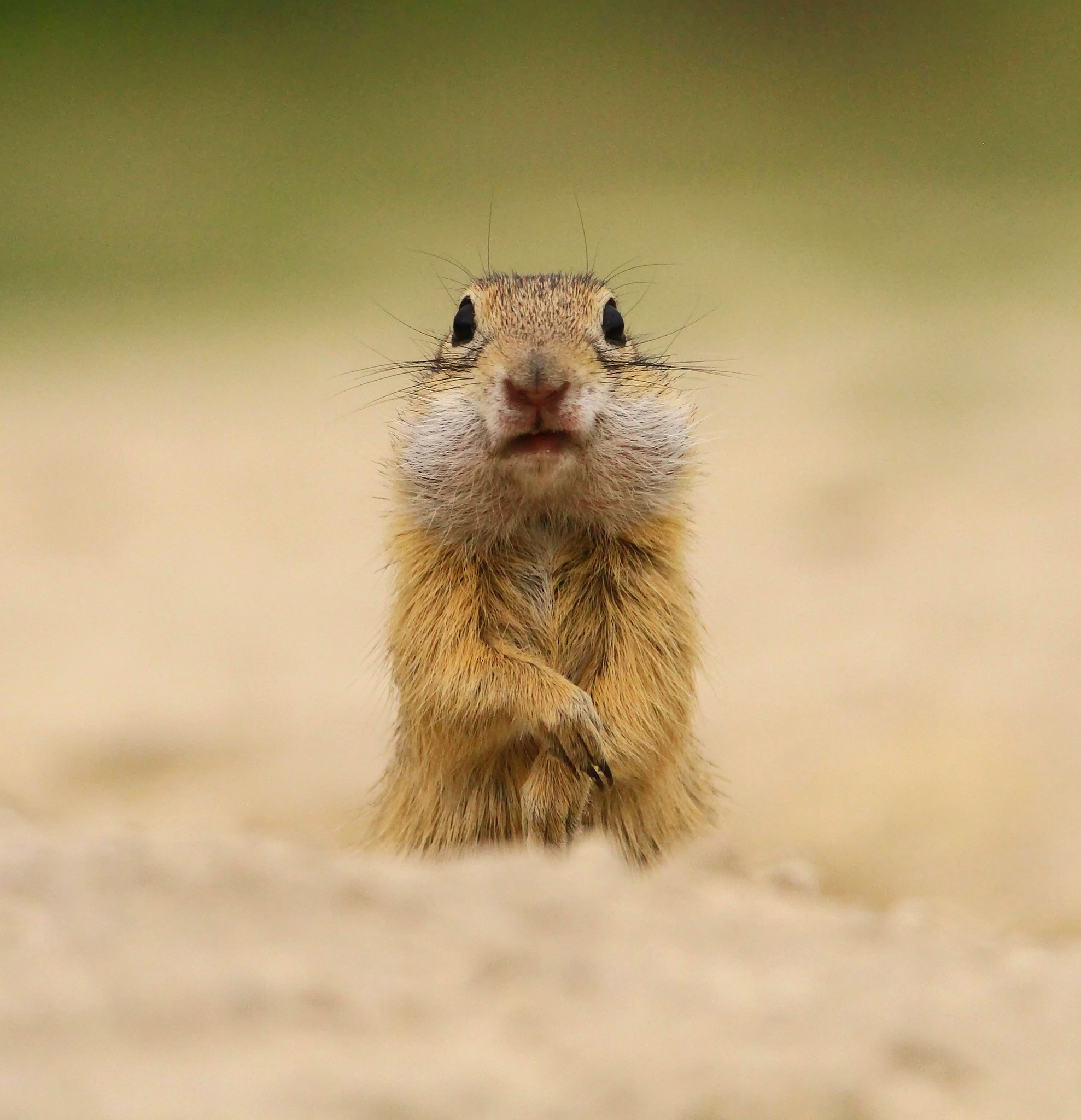
Ground squirrels qre waking up
From several ground squirrels localities in Slovakia, they tell us that the squirrels are waking up.

We delivered two donkeys to Salaš Šurice
Two donkeys from ZOO Bojnice arrived at Salaš Šurice last week. There is a territory of European importance, declared for the ground squirrel and several other rare and protected animals, called Owl's Castle.
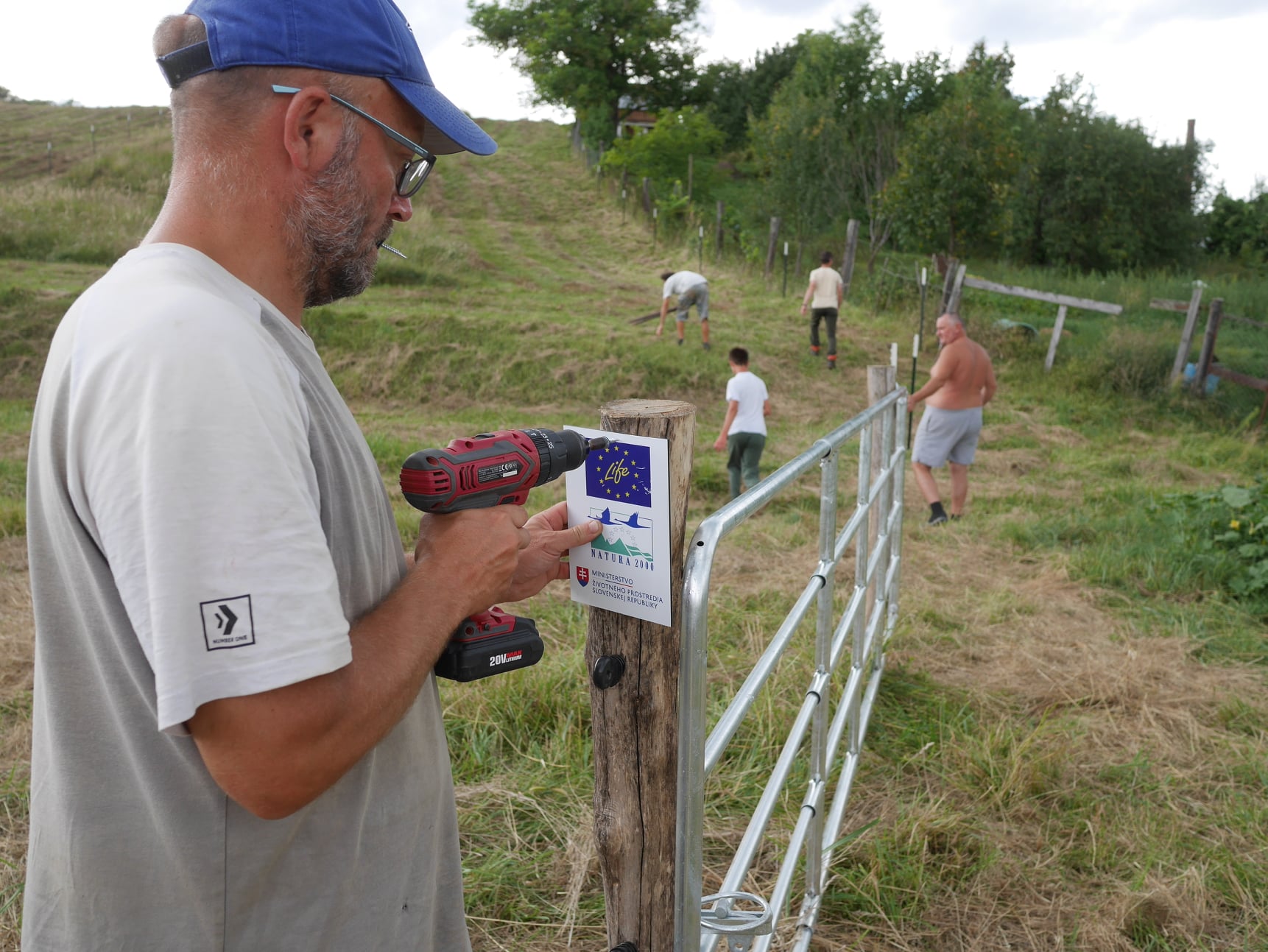
In Cerová vrchovina we built 1 km of fence for sheep grazing
In August, we prepared another fence for sheep grazing, so that ground squirrels would do better. This time, we have built more than 1 km of fencing in the village of Jesenské in the Cerova vrchovina, and grazing on the 4.4 hectares of ground squirrel locality can begin.
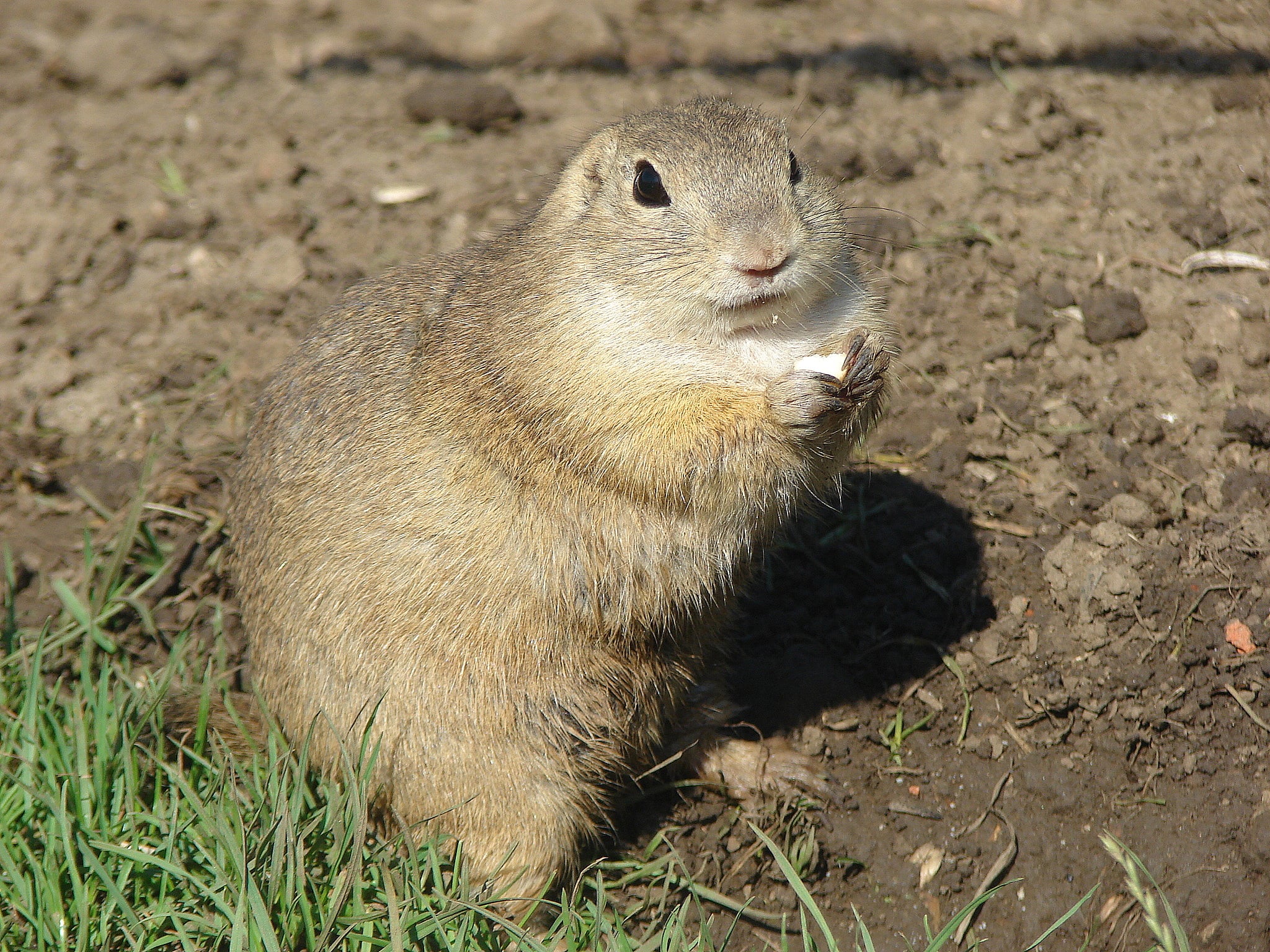
Fat ground squirrel = healthy ground squirrel
A fat ground squirrel, a healthy ground squirrel, this applies especially in this period before hibernation. Ground squirrels can weigh up to more than 500 g. In the spring, they weigh around 200 g. If you see a skinny ground squirrel during this late summer period, you are probably seeing him for the last time.
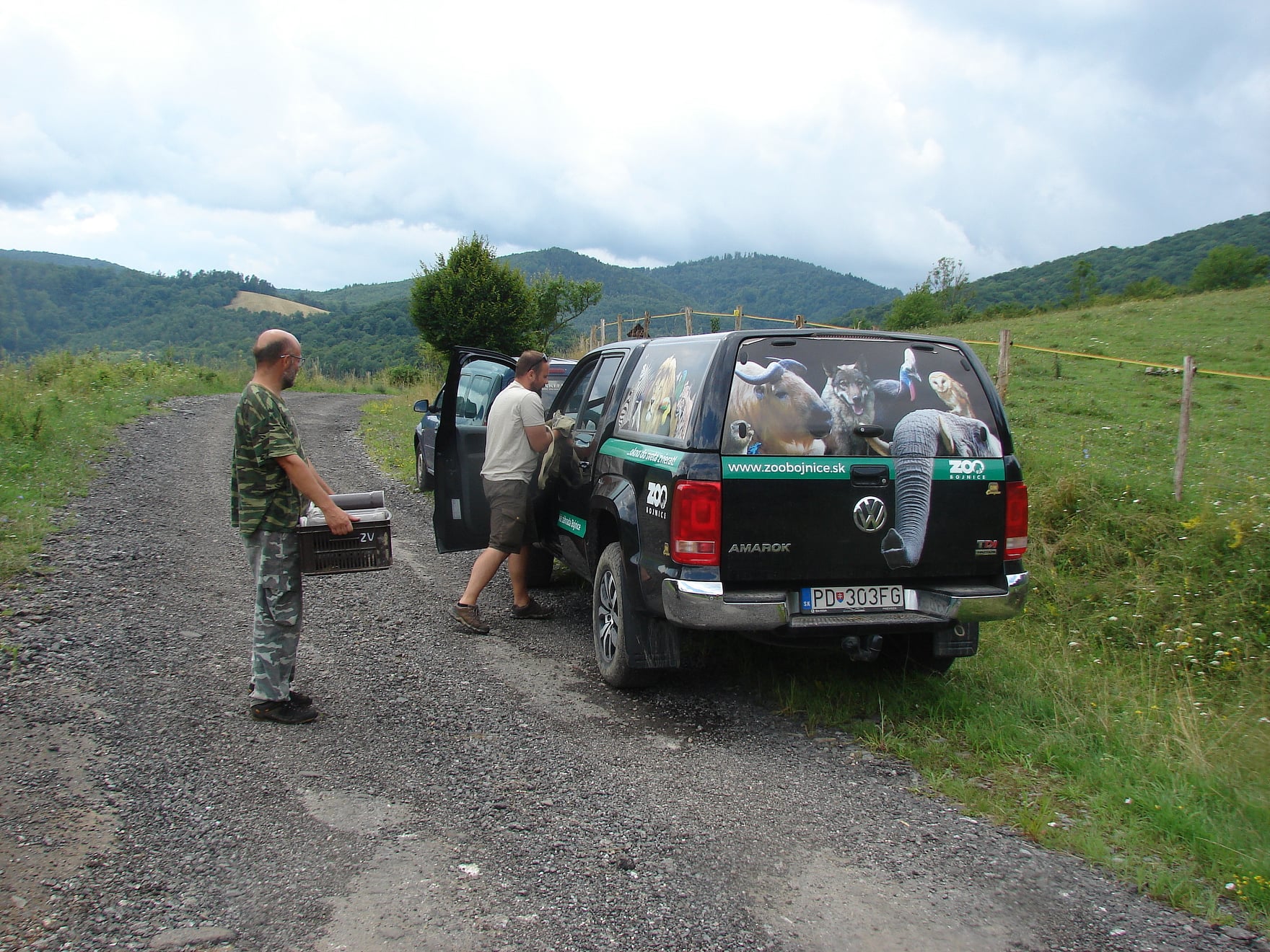
We are strenghtening populations on ground squirrel localities
As part of the project, we are also carrying out genetic research, and at the same time we are strengthening localities where there are so few individuals and interbreeding would deffinetelly occur between them.
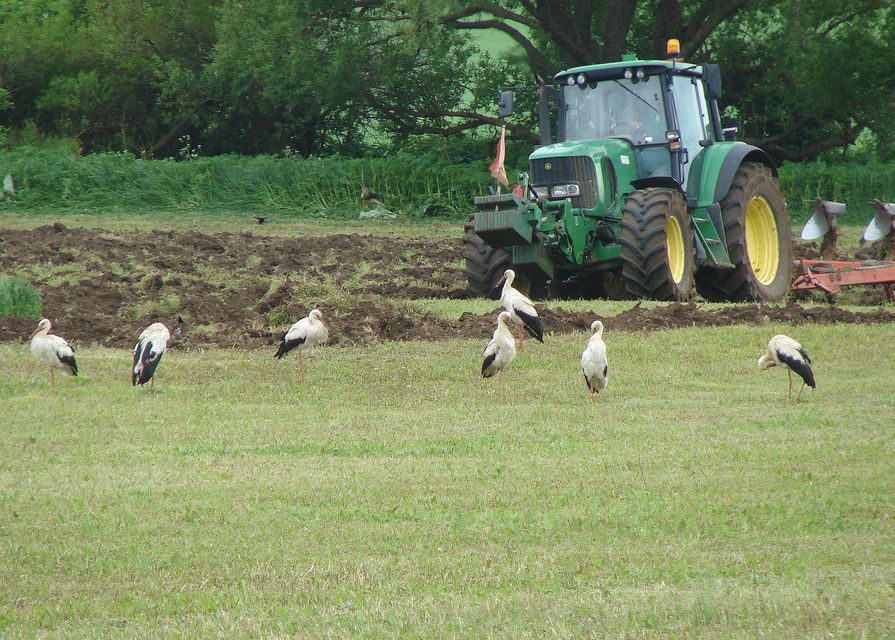
In Turna we saved ground squirrels against plowing
In Turna nad Bodvou, at the Skalistý potok location, there is the second largest forest site in Slovakia. Ground squirrels have settled here partly also in the alfalfa field. That field was recently plowed. The ground squirrels now have youngsters and plowing would kill them.

Denník N writes about our Ground Squirrel project
You can find out about the state of grazing ground squirrel populations in Slovakia, what their needs are and what threatens their ground squirrels in an article in Denník N. The article was illustrated by Monika Pascoe Mikyšková.
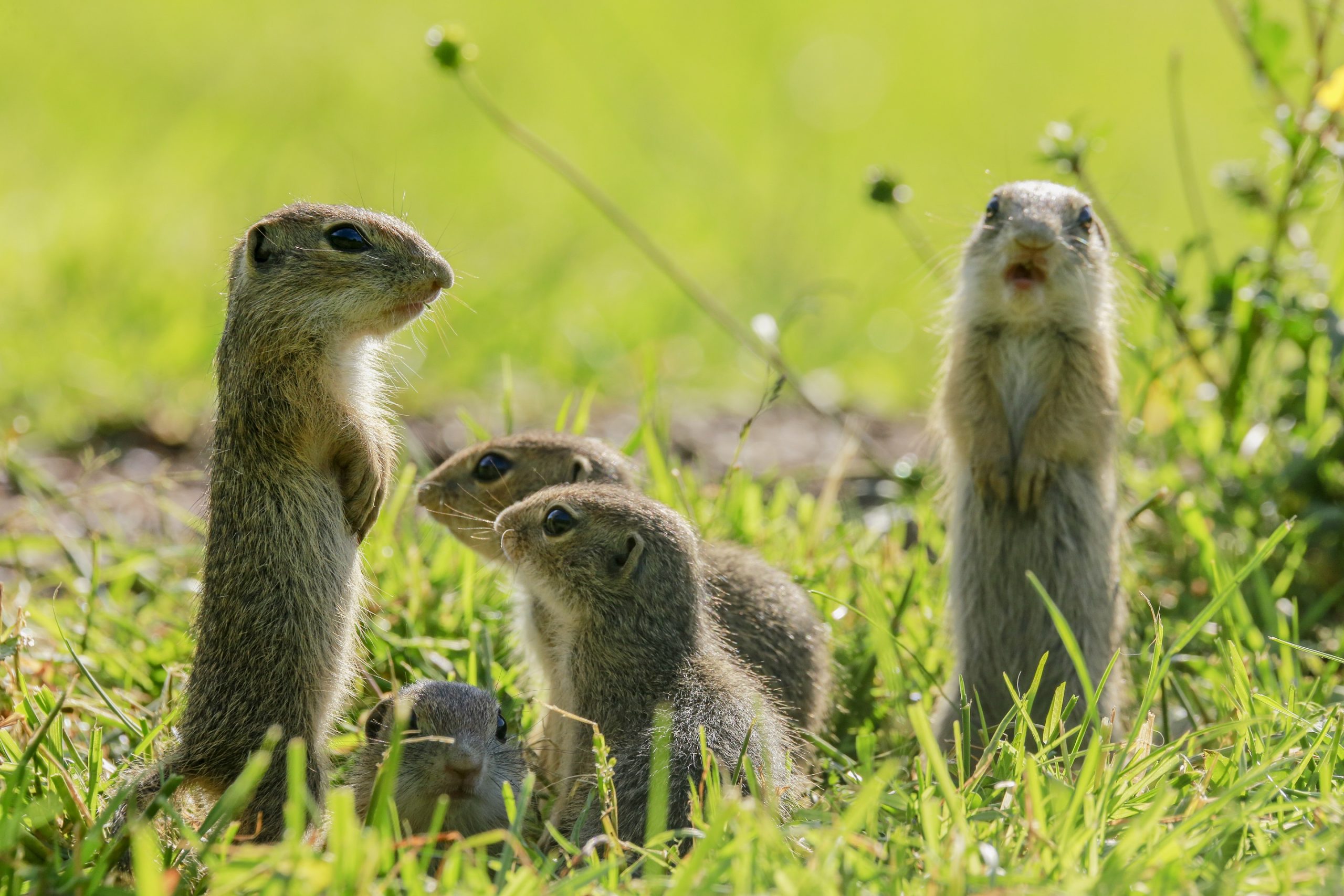
Project LIFE Syseľ for the conservation of the Ground squirrel can begin!
This September BROZ is starting two new projects which have been approvedby the European Comminison. Both LIFE projects aim to protect endangered species and restore their habitats. One of these projects will be dedicated to conserving the European ground squirrel which, a once common species which is now endangered due to habitat loss.

Grazers return to Tisovský kras to protect the ground squirrel
BROZ in cooperation with the local cooperative has begun to graze livestock on 18 hectare of land in Tisovský kras where the ground squirrel population has been on the decline due to inapopriate land management.
Project title: Conservation of European Ground Squirrel (Spermophillus citellus)
Project sector: LIFE+, Nature and Biodiversity
Projektový acronym: LIFE Ground Squirrel
Project code: LIFE19 NAT/SK/001069
Expected start date: 01/09/2020
Expected end date: 31/12/2027
Total project budget: 5 428 988 € (60 % EU financial contribution)
Project partners: BROZ, ALKA Wildlife o.p.s, Polskie Towarzystwo Ochrony Przyrody “Salamandra”, State Nature Conservancy of the Slovak Republic, National Zoological Garden Bojnice
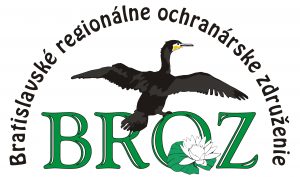



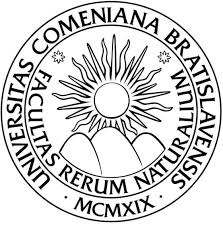
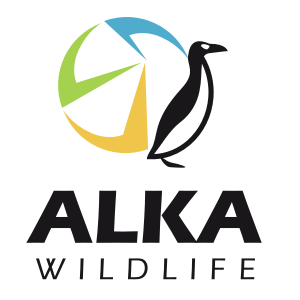
Project focus:
The project is to contribute to the active protection of habitats of the endangered European ground squirrel species in selected localities in Slovakia, the Czech Republic and Poland.
In Slovakia, in most localities in the Alpine and Pannonian regions, the quality of the European ground squirrel population, as well as its habitats, was assessed as unsatisfactory or even poor. The reason is usually the extinction of the habitat caused by a change in the management of the site (especially the abandonment of livestock grazing in the country). The situation is similar in the Czech Republic, in Poland the ground squirrel became extinct in the 1980s, the successful reintroduction of individuals from Slovakia has managed to settle more localities, but the overall population is poor.
Main goals of the project:
1. Restoration of habitats – cleaning of sites from raids, introduction of grazing
2. Strengthening the European ground squirrel population – securing a food base (sowing suitable plants, supporting insect species, planting fruit trees), caring for individual colonies, diverting the forward pressure by supporting other animal species
3. Reintroduction of ground squirrels to suitable sites where they have become extinct in the recent past
4. Cooperation with local interest groups, owners and users in the protection of the target species
5. Replication and transfer of project results
6. Raising public awareness of European ground squirrel protection.
European ground squirrel
It is an animal living in colonies, which needs an open landscape with low vegetation for its life. It suits him if the vegetation is kept low by grazing animals. He needs a look around for his life. Often, as soon as he climbs out of the burrow, he sticks out and observes his surroundings or stands on his hind legs and “sticks out”, like a meerkat or a marmot. He is in danger from several angles. It is a food for foxes, weasels, but also birds of prey – eagles, falcons, and hawks. The ground squirrel is a rodent that lives underground, where it builds a system of burrows that connect corridors with multiple openings. It feeds on grass seeds, green parts of plants, fruits, various insects (crickets, horses, beetles) and does not despise even small voles or lizards. In winter, it hibernates in underground burrows.
Of the common species endangered
The European ground squirrel was once a common species in Slovakia, but by gradually abandoning the grazing of livestock and overgrowing or ploughing suitable sites, its populations were reduced. So much so that the ground squirrel is currently an endangered species. Ground squirrels for changes in the agricultural landscape also suffer from a lack of food, as they feed on plant seeds, fruits and insects, which are difficult to find in the monoculture. Despite the widespread myth, ground squirrels do not steal grain from fields and do not stock up because they hibernate during the winter.
Project localities in Slovakia:
Kečovské Škrapy – Národný park Slovenský Kras (SKUEV0345)
Soví hrad – CHKO Cerová vrchovina (SKUEV0358)
Horný vrch – Národný park Slovenský Kras (SKUEV0356)
Fabiánka – Národný park Slovenský kras (SKUEV0355)
Slovenský raj (SKUEV0112, SKUEV2112)
Mašianské sysľovisko – NP Slovenský raj (SKUEV0784)
Holubyho kopanice – CHKO Biele Karpaty (SKUEV0367, SKUEV2367)
Gavurky – CHA Gavurky (SKUEV0201)
Marcelovské piesky – PR Marcelovské piesky (SKUEV0065)
Bradlové pásmo (SKUEV0942)
Specific conservation activities
Restoration of European ground squirrel habitats in Slovakia
We will improve the existing management in selected localities where ground squirrels occur naturally so far. In the vicinity of these sites, we will create other suitable places where the colony can spread (we will clean them of overgrown trees, introduce pasture, change the land to grassland, etc.). Thanks to these measures, we will create at least 190 hectares of new habitats for grazing ground squirrels.
Strengthening and increasing the state of the ground squirrel population in Slovakia
The activity includes direct care for the colonies of ground squirrels – feeding, sowing plants that are suitable for its food, planting fruit trees of early summer varieties, support measures for animal components of food – especially for insects on which the ground squirrel feeds. As part of the activity, we will also implement measures to support the population of other species in localities so as to provide predators with more food and thus reduce predation pressure in the beginning.
Restitution of the European ground squirrel to localities where it occurred naturally in the past
In many areas of European importance in Slovakia, where the ground squirrel is the subject of protection, this species is unfortunately no longer found or its occurrence has been limited to only one or two colonies. At 10 such sites, where populations have disappeared or are disappearing, the transfer of individuals and the re-establishment of the colony will take place. The selection of sites will be preceded by long-term preparation and will be selected based on the possible implementation of other managements to improve the state of populations.
Habitat restoration and population strengthening in Poland
Habitat restoration and measures to increase and improve the stock of the European ground squirrel population in Poland will be implemented on a total area of 22 ha.
A.1 Elaboration of databases on land use and ownership within the area
The database of individual data for cadastral areas with existing colonies of EGS, as well as those planned for restitution, was created. Various data can be searched in the database, such as known/unknown owners, partial/100% ownership, land parcels within SCI borders/outside borders. The database will be used during the whole project duration to search for owners to negotiate both, the land purchase and land lease in Action B.1 and habitat management in Actions C.1, C.2 and C.3.
A.2 Completion of genetic database and complex genetic study in Slovakia
First genetic screening and evaluation was completed. It was acknowledged that the ground squirrel population in Slovakia is significantly fragmented. Colonies survive in isolated demos with signs of genetic erosion. The translocations of individuals from abundant viable source colonies (only three in Slovakia – Bratislava airport, Muránska planina and Skalistý potok) to small genetically eroded colonies within regions due to the occurrence of possible adaptations to the microclimatic conditions of the region was recommended.
A.3 Review on habitat restoration and restoration of European Ground Squirrel populations
The documents Review on existing species, management and land use and Recommendations for restoration of EGS colonies and exist strategy were prepared. Except of these documents, the management was consulted with zoology and botany experts prior to measures taken.
Project partners also worked on designation of the new SCI area SKUEV4003 Cifra, designated in 2023 where occurrence of EGS was the main motivation to protect the area (besides EGS, habitats 6210 and 5130 are listed in SDF forms).
BROZ also worked on the National park Slovenský kras Management plan, preparing a chapter on EGS conservation and management recommendations.
B.1 Land purchase/lease in Slovakia
2.95 hectares of land in cadastral area Jesenské in SCI SKUEV4003 Cifra have been purchased so far by SNC.
B.2 Land purchase/lease in Poland
In total 7.54 hectares have been purchased and negotiations with other land owners are carried out currently.
C.1 Restoration of European Ground Squirrel habitats in Slovakia
Clear-cutting and logging of the overgrown vegetation with trees and bushes in various stages of succession was carried out on 12.5 hectares of abandoned agricultural land in SCIs Muránska planina and Tisovský kras.
The total area cleared from overgrown shrubs, young shoots, old grass and invasive species cover 31.19 hectares. Less overgrown grasslands abandoned only recently were cleared from shrubs, sprouts or young trees on the area of 25.89 hectares in SCIs Horešské lúky, Slovenský raj, Kečovské škrapy, Beležír, Bolerázske sysľovisko, Chtelnické sysľovisko, Tisovský kras and Cifra. We have burned old grass biomass in a total area of 5.3 hectares. This management was carried out in localities where grazing did not occur for several years and locality was not yet overgrown by larger trees or shrubs, but the grassland cover was too old and the layer of old mulched grass was thick, so no animals would graze it (SCIs Horešské lúky, Bradlové pásmo and Cifra.
The change of grassland management was carried out on 112.52 hectares so far, already exceeding the project goal. This includes the change from mulching to mowing and/or grazing (SCIs Spišskopodhradské travertíny, Muránska planina, Beležír and Bolerázske sysľovisko), change from mowing to grazing (SCIs Slovenský raj and Holubyho kopanice), change from mowing and late grazing to year-round grazing (SCI Mašlianske sysľovisko), change from very low intensity grazing to early spring mowing with extensive grazing in summer and autumn (SCI Vodokáš) and change from abandoned, occasionally mulched land to grazed land (SCI Cifra).
Grazing was established and is continuously carried out on 67.02 hectares in localities SCIs Slovenský raj, Muránska planina, Spišskopodhradské travertíny, Mašianske sysľovisko, Tisovský kras, Holubyho kopanice and Cifra.
Management by mowing covers a total 82.57 hectares (SCIs Beležír, Vodokáš and Bolerázske sysľovisko).
C.2 Supporting European Ground Squirrel populations in Slovakia
There were 202 fruit trees planted in 7 localities to provide EGS colonies with a sustainable source of food even after the project ends. Another 105 trees were engrafted on wildling cherries and apples that were found in the locality during clear-cutting of bushes. Only trees and varieties that produce fruit in summer or early autumn were selected to provide EGS food before hibernation.
Seeds of plants providing direct food for EGS (clover and barley) as well as those attracting insects as important EGS food sources and supporting overall diversity of the area (Onobrychis, Sedum, Sanguisorba) were planted in 4 localities.
258 bird boxes (for wagtail, starling, sparrow, tits) and 86 boxes for small mammals (edible dormouse, hazel dormouse) were installed in 13 localities to divert predatory pressure on EGS colonies.
4 small-scale measures were taken in 3 localities for other species such as lizards, amphibians, snakes or even fish to increase overall diversity of localities. Bales of hay, piles of wood were installed for this purpose. Four small wetlands were dug up in SCI Muránska planina to support amphibians, but where 1100 fish of Tinca tinca were produced as well. These helped to reduce mosquitoes that are plaguing grazing animals.
The predators were detected on 14 sites, but not in all of them the predation was detected. We did not deal with wild cats as they are also protected species. In case the predation was noticed from fox and badger lairs, the lairs were destroyed repeatedly and the predator moved away from the colony. The predation of prey birds was dealt with by installation of bird boxes to reduce the pressure, but also warn ground squirrels by birds chirping. In several localities the predation of domestic cats was noticed. Here the cats were caught or scared repeatedly.
Feeding by sunflower seeds and fruit was carried out in all project localities where EGS colonies existed or were restored. We focused on times after hibernation, before hibernation, after young were born or in unsuitable weather during heavy rains or severe droughts. Only sunflower from ecological production was purchased and we made sure no seeds of invasive species were present.
C.3 Restoration of European Ground Squirrel populations in Slovakia
In total 5 colonies were so far established in SCIs Holubyho kopanice, Bežnisko (2 sites), Kamenínske slaniská and Marcelovské piesky. In all of them the number of EGS is not yet sufficient, therefore releases will continue in these localities.
We translocated individuals into 12 project localities from three donor sites with good genetic structure. For the most part we have used individuals that were threatened. In summer many young individuals move further from colonies and in case of Bratislava airport and Skalistý potok it is to neighbouring fields where would be killed by ploughing in autumn or spring while hibernating. In the case of Bratislava airport, we have also used individuals threatened by the nearby construction of a shopping mall.
In total 1005 individuals were captured, transported and released, of these 321 were used to set up new colonies by restitution and 684 to improve the genetic structure by translocations. Another 177 individuals were transferred to ZOO Bojnice, where these will be used for breeding and further restitutions and translocations.
C.4 Restoration of habitats and support of populations in Poland
After negotiations with land owners grazing of cows started on 11 hectares in SCI Dolina Lachy. 7.54 hectares of land was purchased, where the management by mowing, grazing by cows and seeding will be carried out.
The situation in SCI Kamien Śląski is more complicated as here the locality is partially mowed very late and partially overgrazed by horses and the number of EGS in the colony dropped significantly. The negotiations with the local farmer did not go well, therefore we started to cooperate with the regional conservation authority to prepare a new Plan of Conservation Tasks for the Kamień Śląski Natura 2000 area. After that, more active conservation measures in the area can be taken.
EGS colonies in both project localities were regularly fed by sunflower seeds, apples and carrots especially in times of drought, long heavy rains and early spring after hibernation.
D.1 Monitoring of the impact of project activities on European Ground Squirrel populations
The initial numbers in Slovakia were set up for 20 000 individuals, which is very low and the species is considered as critically endangered. The management conservation measures together with support of EGS populations carried out in Actions C.1, C.2 and C.3 resulted in an increase of the number of EGS individuals to 38 000. Unfortunately, year 2023 was year with unsuitable weather for EGS (heavy and long rains in spring, with flush floods in some localities that drowned many young EGS in burrows and prolonged droughts in summer), but with activities carried out within C.2 the numbers grew even during this year instead of dropping significantly.
More than the overall increase of the EGS population, the situation in localities with very small numbers of individuals is important as here the growth is the most difficult to reach. Once the population breaks the threshold of 150 individuals the growth is more rapid as it is more stable, less prone to predation pressure. The genetic structure is then improved, represented by higher natality of young and less diseases. It is important to know numbers of EGS populations outside the project area as we use them as the control localities, where we can see that numbers did not grow in 2020-2023, therefore it is confirmed that the increase is due to the project actions and it is not just the general trend or result of the good weather.
In Poland in SCI Kamien Slaski we faced rapid decrease of EGS numbers from 690 in 2019 to 156 individuals in 2023 due to the late mowing of the meadow by the land user and intensive grazing by the excessive number of horses on the other part of the grassland causing deterioration of habitat conditions. We hope that new Plan of Conservation Tasks will bring positive results and allow us to carry out more active conservation measures in the area.
In SCI Dolina Łachy, locality Głębowice, the management by grazing and additional feeding had a good effect on EGS colony – population is stable, an increase in numbers is observed from 680 in 2019 to 960 individuals in 2023. After the land purchase, we expect further growth of the colony through the improvement of habitat conditions on the adjacent areas and translocations to newly created sites.
In 2022 and 2023 parasitological research was carried out at 15 EGS locations, more sites than originally proposed, due ecological correlation. The research is focused on one PhD. thesis and one Master thesis. As much as 610 samples were collected and their statistical analysis is in progress. The Master thesis focused on EGS viruses and the analysis of nesting material is in progress as well.
After catchments close to Bratislava airport in summer 2023, where animals had to be removed completely from the area due to the construction of a shopping mall, we used the excavator and manual digging to obtain nest lining for parasitological research from 9 burrows.
Another Master thesis is focused on EGS food source, for which collecting of debrits was carried on 7 project sites. The insect groups as important EGS food sources (species of Orthoptera, Lepidoptera, Coleoptera, Hymenoptera) and bioindicators of management practices were monitored, too.
Small terrestrial mammals represent potential food competitors for EGS (for vegetation, seeds, insects) and also serve as the occasional food supplement for EGS (mostly in spring months). They can also divert the predation pressure from EGS colonies and therefore it is important feedback to C.2 Action on what supportive measures should be taken. In 2023 8 localities were monitored by live-trapping method, where a higher number of small mammals was detected than in 2022.
D.2 Monitoring of the socio-economic impact of project actions
The total number of respondents participating in the survey within the 12 affected municipalities in the project area was 252 in the first round of the questionnaire survey – Smižany (56 respondents), Tisovec (39 respondents), Chtelnica (39 respondents), Spišské Podhradie (29 respondents), Muráň (26 respondents), Dechtice (16 respondents), Hrhov (14 respondents), Dobrá Voda (13 respondents), Dolný Lopašov (9 respondents), Spišské Tomášovce (6 respondents), Zádiel (3 respondents) and Nižná (2 respondents).
While evaluating all four thematic areas (conservation activities, other project goals, practical outputs, contribution of the project), we came to the conclusion, based on the respondents’ answers, that in all three age categories (18-39, 40-59, 60 and over) project benefits were rated with the highest score (on average 4.21 out of 5, i.e. 84% satisfaction), followed by other project goals (average 3.71, 74%), conservation activities (average 3.65, 73%) and practical outputs of the project (average 3.59, 72%). In all cases, it is a relatively high score (on a scale of 0-5, the average rating would mean 2.5 points, i.e. 50% satisfaction). The results rated highly in favour of nature conservation in selected localities testify to the fact that the public of evaluated municipalities regards project activities and related conservation measures positively.
D.3 Monitoring of ecosystem services
The current state of ecosystems in 5 project localities was recorded (1/3 of all localities) in 2022. The localities selected are the same as in D.2 study (SCIs Chtelnické sysľovisko, Horný vrch, Slovenský Raj, Tisovský kras and Spišsko-podhradské travertíny), so the correlations also can be concluded. Several key indicators were selected related to grasslands restoration and cultural services.
D.4 Monitoring of output indicators
The key indicators were selected (such as hectares of land managed, number of visitors, number of EGS) and are monitored during the project regularly.
E.1 Raising the public awareness and dissemination of results in Slovakia
Results:
- the project logo
- 744 pcs of organic and fair trade made T-shirts in 4 different designs and in various colours
- ground squirrel socks in cooperation with company Dedoles
- one short 5-minutes educational video by FNS student informing on EGS life
- 4 presentations for general public and for public schools
- 8 radio and 9 TV reportages and interviews
- 69 articles dealing with the project in general, restoration of colonies and catchments at Bratislava airport, management by grazing and need for conservation of EGS
- 89 posts published on social media; can be searched by #LIFE_sysel
E.2 Exchange and transfer of information, knowledge and lessons learnt, networking with other projects, replication of project activities
The meetings, workshops, conferences attendance as well as networking was severely hindered by COVID 19 pandemic and restrictions.
Between 2020 and 2023 only 3 networking events were carried out. The networking with the projects LIFE17 IPE/CZ/000005 and LIFE16 NAT/CZ/000639 of Czech Agency on Nature Conservation was carried out in field, visiting two project sites (SCIs Tisovský kras and Muránska planina). The networking with researchers from all states where EGS occur was done via email and online conference while preparing for EGS EU Species Action Plan update – new information on species distribution, actual numbers, population trends as well as management measures in all countries were discussed and the material was compiled. We were approached by Hungarian NGO Herman Ottó Institute that prepared the LIFE project in 2023 for exchange of information and consultations, however the project was not supported.
Volunteers helped in conservation activities (e.g. clear-cutting shrubs and burning grass cover), with removal of old illegal dumping sites, planting of trees, installation of bird and mammal boxes, with additional feeding and with catchments for restoration of EGS populations and translocations. They could not help with EGS manipulation and transfer as these are protected animals, but helped in watching traps during catchments, watching localities after restorations so EGS individuals would not run away, but settle in new locality as well as in feeding them prior catchments to get individuals used for bait that will be later placed into traps. In total, volunteers worked 269 person/days. Volunteers carried out replications as well and worked at least 118 persons/days.
Slovakian partners attended 3 conferences – in Brno, in 2022 Conference on research and conservation of small mammals in Banská Bystrica, in 2023 Zoologické dny Brno and in 2024 Zoologické dny Ostrava.
The replications were carried out at 10 localities, where different conservation measures were replicated 5 times, and different measures to support EGS populations replicated 20 times. The restoration of EGS colonies was replicated 2 times and translocations were replicated 7 times. Restoration of the EGS exposition started in ZOO Bratislava.
E.3 Public awareness raising and dissemination of results in Poland
The website on project activities in Poland was created and is working as a subsite to the official SL webpage. The project was promoted in local radio 4 times, once in Local TV. One article was published and information was published on a government site as well.
In 2020 SL participated in the conference: 27th Meeting of the International Hamster Workgroup, Jaworzno “Conservation and ecology of the common hamster, a critically endangered rodent” with presentation on the experience from the EGS conservation programme to actively protect the common hamster, and vice versa.
E.4 Public awareness raising, dissemination and replication of results in Czech Republic
From the beginning of the project, we communicate with stakeholders, especially land owners, on an ongoing basis by e-mail, phone and in person. The most important stakeholders are wine growers, orchard growers, farmers, representatives of municipalities and regions and other land owners/users such as aero clubs.
There are 5 ongoing replications in Božice/Borotice, Hnanice, Havraníky, Miroslav and Velké Pavlovice.
Scientific 3 years-long project on genetic study (to replicate results of A.2 Action) was prepared with Charles University in Prague, University in České Budějovice and ZOO Hluboká that was recently approved.
We attended 4 meetings of AOPK dealing with EGS, in three of them we presented activities and results of the project. We participated in 4 monitoring activities in Slovakia in 2022 and 2023, one was connected with catchments and transport of EGS to Boržice from Bratislava airport.
3 informational rollups and 2 banners were created, which are used at various events for the public and can also be lent to cooperating organizations.
We attended 5 public actions (1 in Velké Pavlovice and 2 in Miroslav during festival on apricot picking, 1 in Miroslav at the airport public day, and 2 in ZOO Olomouc) and prepared 3 project days in three public elementary schools in project areas.
The webpage www.syslinavinici.cz, as well as social media, promote the project updates, updates on the state of populations, advice on how to help ground squirrels and examples of good practice. The cooperation with land owners under special labelling “Ground Squirrels in the Vineyard” and “Ground Squirrels in the Orchards” is promoted here, too.
2 articles were published – „Sysel obecný – zrcadlo zemědělské krajiny“ in magazine Myslivost no. 12/2021 and scientific article „Unusual habitat of European ground squirrel (Spermophillus citellus) populations in agricultural landscape“ in magazine Thayensia no. 19/2022.
1 TV and 1 radio reportages were aired in 2022 (Czech television and Czech radio), both dealing with EGS populations, their endangerment, conservation and the project aims.
We attended 3 conferences two domestic (in Telč 25/1/2021 and in Velké Pavlovice 1-3/12/2021) and one international (Vilnius, Lithuania 10/11/2021).
F.1 Project management
The key personnel were hired for the project. Four Steering Committees were carried out (March 2021, November 2021, December 2022 and December 2023).
Conservationists are starting a project to protect the European Ground Squirrel from September – Dobré noviny
Ground Squirrels suffer from a lack of food, planting trees would help them – Denník N
BROZ starts a project to protect the European Ground Squirrel from September – Enviroportál
Conservationists from Bratislava are starting a project to protect the European Ground Squirrel – TASR
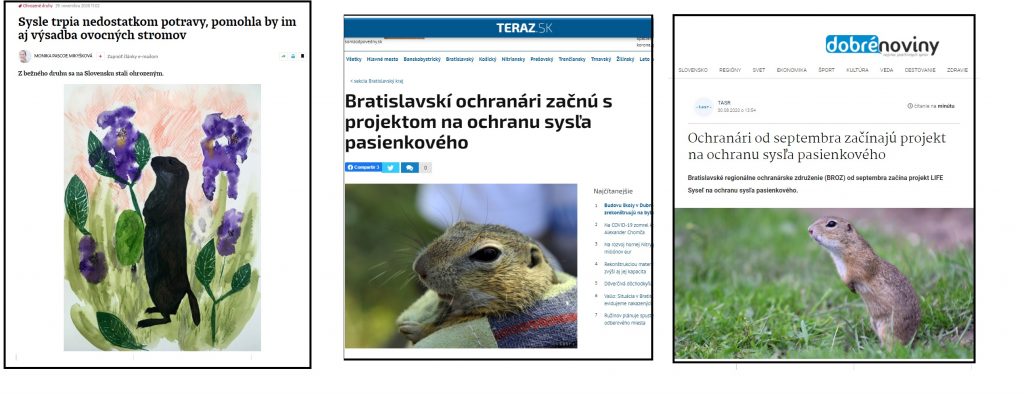
Mgr. Katarína Tuhárska – project manager tuharska@broz.sk +421 915 767 762
Currently, there are no volunteer activities in localities where we protect ground squirrels. We will inform you about such activities.




